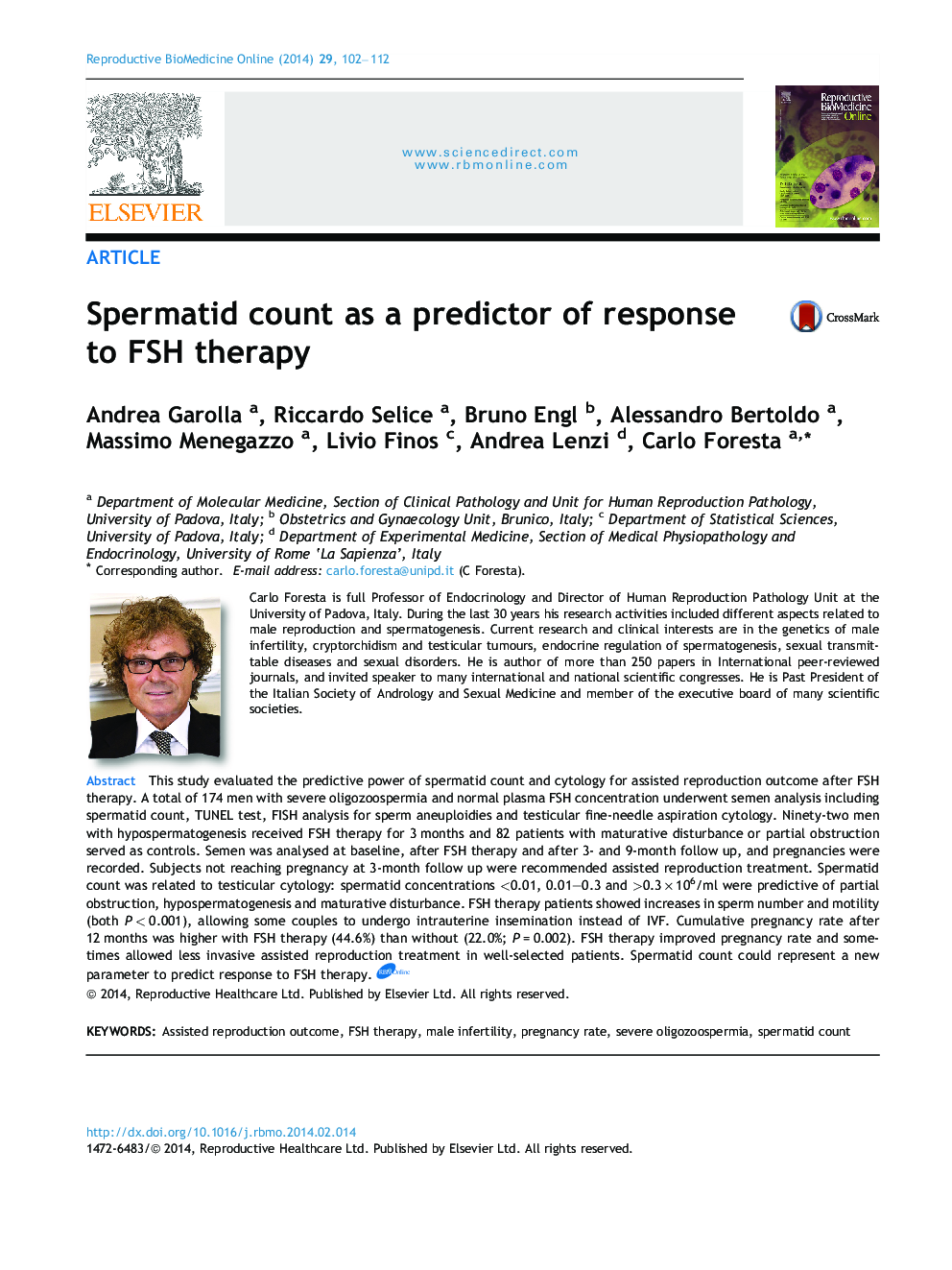| کد مقاله | کد نشریه | سال انتشار | مقاله انگلیسی | نسخه تمام متن |
|---|---|---|---|---|
| 3970146 | 1256702 | 2014 | 11 صفحه PDF | دانلود رایگان |

This study evaluated the predictive power of spermatid count and cytology for assisted reproduction outcome after FSH therapy. A total of 174 men with severe oligozoospermia and normal plasma FSH concentration underwent semen analysis including spermatid count, TUNEL test, FISH analysis for sperm aneuploidies and testicular fine-needle aspiration cytology. Ninety-two men with hypospermatogenesis received FSH therapy for 3 months and 82 patients with maturative disturbance or partial obstruction served as controls. Semen was analysed at baseline, after FSH therapy and after 3- and 9-month follow up, and pregnancies were recorded. Subjects not reaching pregnancy at 3-month follow up were recommended assisted reproduction treatment. Spermatid count was related to testicular cytology: spermatid concentrations <0.01, 0.01–0.3 and >0.3 × 106/ml were predictive of partial obstruction, hypospermatogenesis and maturative disturbance. FSH therapy patients showed increases in sperm number and motility (both P < 0.001), allowing some couples to undergo intrauterine insemination instead of IVF. Cumulative pregnancy rate after 12 months was higher with FSH therapy (44.6%) than without (22.0%; P = 0.002). FSH therapy improved pregnancy rate and sometimes allowed less invasive assisted reproduction treatment in well-selected patients. Spermatid count could represent a new parameter to predict response to FSH therapy.One-hundred seventy-four patients with severe reduction of sperm count and normal sex hormones plasma levels underwent semen analysis with spermatid count, and testicular fine needle aspiration cytologiy (FNAC). Ninety-two men infertile men with reduced sperm production (hypospermatogenesis) were treated with highly purified urofollitropin and 82 patients with sperm maturative defects or partial obstruction of the seminal tract served as controls. After treatment and after the following 3 and 9 months all subjects performed a new semen analysis and pregnancies were recorded. Subjects who had not reached spontaneous pregnancy were suggested to undergo assisted reproductive techniques (ARTs). Spermatid count was strongly related to testicular cytology: spermatid concentrations were predictive of partial obstruction, hypospermatogenesis and maturative disturbance respectively. Treated patients showed significant increase in sperm number and motility allowing some couples to undergo easier and less invasive assisted reproductive techniques. The number of pregnancies was significantly higher among treated (44.6%) than untreated couples (22.0%). Our data confirmed that FSH treatment can induce a significant improvemet of pergnancy rate and sometimes allows less invasive ARTs use in well selected severe oligozoospermic patients. Moreover, we suggest that spermatid count can be useful to define tubular status and could represent a new parameter to predict response to FSH therapy.
Journal: Reproductive BioMedicine Online - Volume 29, Issue 1, July 2014, Pages 102–112